When and how to feed pepper seedlings at home: feeding scheme and the best fertilizers
Novice gardeners are often overly keen on the issue of feeding various crops during their seedling period. However, it is very important to understand when it is really possible and necessary to produce them.
From this article you will find out when and how to feed pepper seedlings so that the seedlings are healthy and strong, develop well and give an excellent harvest in the future.
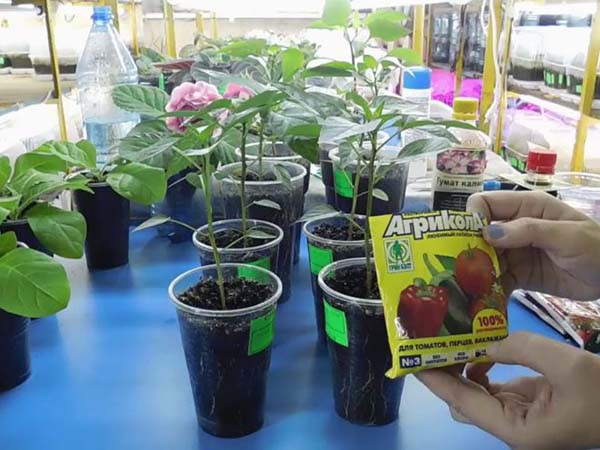
Content
When do pepper seedlings need to be fed
The need and expediency of feeding depends on some of the preceding circumstances:
- So if you initially sowed pepper seeds in high-quality soil, which was purchased from a garden store or was made by yourself, then in this case, most likely, no additional feeding seedlings not requiredsince the soil mixture already has all the necessary nutrition.
- Another thing is if you are planted in relatively poor soil (garden land and sand) or the purchased land turned out to be substandard, then without dressing grow strong pepper seedlings will be difficult enough.
However! It is believed that it is best to grow seedlings in poor soil, gradually giving it the necessary nutrients at every stage of development, in other words, it is necessary to feed it.
- And the most important sign of the need to feed pepper seedlings is general condition, its appearance, which signals that plants are lacking nutrition (certain macro- or micronutrients).
An important circumstance! The necessary nutrients may be in the ground, but the seedlings may simply not receive them due to inadequate growing conditions... For example, if the soil temperature is too low, then the peppers will simply not be able to absorb many nutrients (the same phosphorus).
Conclusions:
- If the seedlings look good and grow quickly, while you are confident in the fertility of your soil, then you can do without any additional feeding;
- It's another matter if the plants look depressed, the leaves change color (most often turn yellow), then this is clearly a signal that the pepper seedlings need to be fed urgently.
Don't forget! The quality of seedlings primarily depends on growing conditions (sufficient daylight hours, suitable temperature conditions, correct watering).
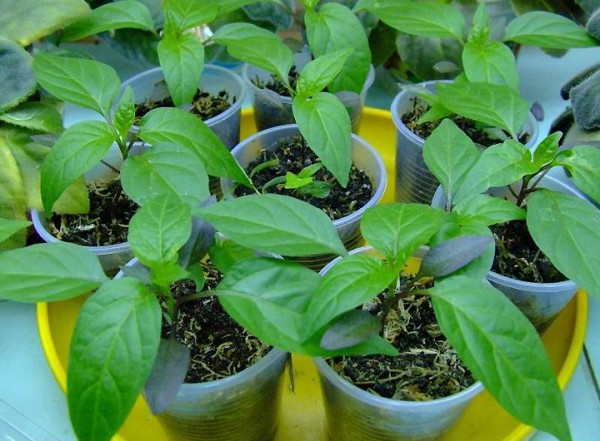
How to properly feed pepper seedlings with a shortage of nutrients
A nutritional deficiency, as a rule, immediately affects the appearance of plants, namely, the leaves of pepper seedlings. Here are the most typical manifestations of the lack of basic nutrients in seedlings (phosphorus, nitrogen and potassium):
- If the stems and / or leaves of the peppers suddenly became purpleso to speak turned blue, then most likely they need phosphorus.
However, most often such a reaction (blue leaves) occurs at extremely low temperatures, in which phosphorus is poorly absorbed. As soon as the soil temperature rises, phosphorus will begin to be assimilated (if, of course, there is plenty of it in the earth).
Accordingly, you can make liquid feeding one of the phosphate fertilizers, eg, superphosphate extract or solution potassium monophosphate.
Note! In the seedling period, this happens very rarely, as a rule, after landing on the garden bed (which is logical, because the ground in the open ground may not be warmed up enough).
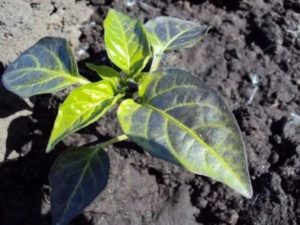
By the way! But with tomatoes during the seedling period, this happens much more often, so the site already has an article about what to do if the stems and leaves of tomato seedlings turn purple.
- With a lack nitrogen supply first, there is a common yellowing of old lower leaves of seedlings. However, they turn yellow evenly (not spots, not streaks, not along the edges, and not in the middle!), and then their growth in general slows down - the plant begins to lag behind in development. Sometimes the lower yellowed leaves also fall off..
In this case, the seedlings should be fed with any nitrogen-containing fertilizers, for example, mineral - urea or ammonium nitrate, organic - infusion of chicken manure, mullein.

Note! Yellowing of leaves does not always speak about the lack of nitrogen, chlorosis of leaves may indicate lack of the same iron... More information about why do seedlings turn yellow, read in this material.
- If the leaves of the seedlings of peppers turn yellow at the edges (get marginal burn), while the inner part of the sheet plate remains green, then this clearly speaks of lack of potassium... It is necessary to fertilize with potassium fertilizer, for example, a solution potassium sulfate or wood ash.
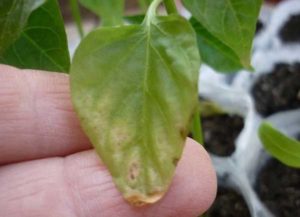
However, for feeding peppers seedlings in the general case (so to speak, for sure), it is most optimal to use complex mineral fertilizers containing all the main macroelements (nitrogen, phosphorus and potassium). For example, fit nitroammophoska or azophoska (all 16%).
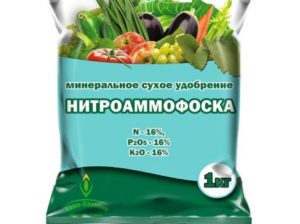
Alternatively, you can prepare such a universal solution from separate single-component mineral fertilizers (for 10 liters of water):
- ammonium nitrate or urea - 5-10 grams;
- potassium sulfate (potassium sulfate) - 5-10 grams;
- superphosphate - 10-20 grams.
If you are a supporter of natural farming, then as organic compound fertilizer can cook chicken manure solution (or mullein), which, in addition to a relatively high nitrogen content, also contains potassium, phosphorus, and even some trace elements (the same calcium).
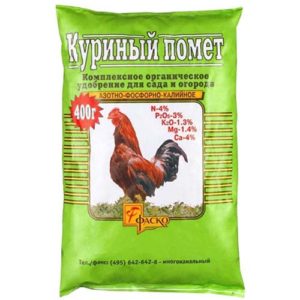
And yet it is best and easiest to use universal fertilizers, which include the whole complex of macro- and microelements for the most complete and comprehensive plant nutrition... For example, Fertika Lux.
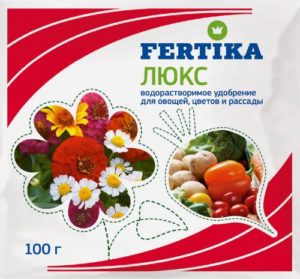
It is much easier and completely to use special ready-made fertilizers, for example, Agricola for peppers, tomatoes, eggplants.
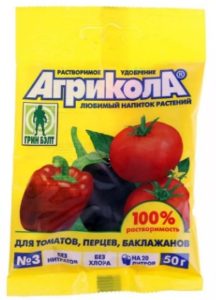
Some people think that it is good to saturate seedlings with fertilizers with humic acids (humates). For example, it could be Potassium humate or Humate +7 with trace elements.
However! Humates, as a rule, are used after planting seedlings in the ground to improve the structure of the soil, including the introduction of various types of microorganisms.
It is another matter if we consider and apply Humate +7 with a lack of trace elements, including during the seedling period.
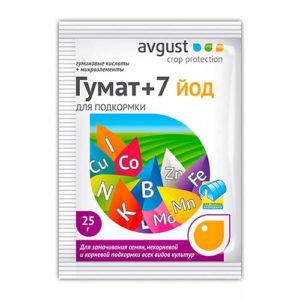
For feeding seedlings, a complex fertilizer "Cytovit" is suitable (according to the instructions, 10 ml per 10 liters of water), which contains the whole complex of trace elements in an easily accessible (chelated) form, and small amounts of nitrogen, phosphorus and potassium.
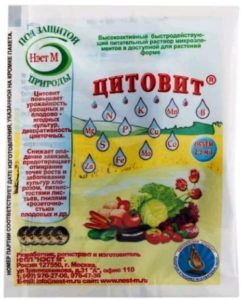
When and how to feed pepper seedlings: a detailed feeding scheme
Next, you will find a classic scheme for feeding peppers during the seedling period, which will allow you to grow strong plants that can subsequently give a decent harvest.
And first, let's find out when and why plants need certain nutrients (phosphorus, nitrogen and potassium), for which they are responsible.
- First of all, especially at the initial stage, peppers need sufficient phosphorus nutrition, which is responsible for the active formation of the root system.
- Together with the growth of the underground part (roots) during the seedling period, the peppers must also build up a sufficiently strong skeleton - the aboveground part (stems and leaves), for the growth and development of which is responsible nitrogen.
Important! You need to be careful with nitrogen. With an excess of it, the seedlings will have an excessive green mass, which will negatively affect flowering and fruit formation.
- Potassium promotes the formation of flower ovaries and increases the quality and quantity of fruits. In other words, it will be required in large quantities. during flowering and fruitingsince responsible for pouring the fruit.
Thus, during the seedling period, peppers need fertilizers with a high content of phosphorus and nitrogen and very little potassium.
Micronutrients complement the action of macronutrients. So, pepper requires:
- iron and especially magnesium (for photosynthesis);
- calcium (to strengthen the stems and root system).
Before the pick
Note! Before picking pepper seedlings (and any other crops) no additional feeding is necessary: all the necessary nutrition for initial development is in the seeds themselves (even if you originally sown in sufficiently poor soil, so it is better to sow in a relatively nutritious one).
And if you notice that the seedlings are suffering, then the best solution would be an earlier pick into a new soil and more spacious planting tanks.
Immediately after the pick
It should be understood that the procedure for transplanting (picking) seedlings is always severe stress for any plant, especially for its root system, which is quite tender in peppers.
Therefore, there is an opinion that after pepper picks their seedlings should be fed phosphorus fertilizer in order to relieve stress from trauma to the root system and to resume its rapid growth and development. And after the plant forms good roots (takes root = takes root in a new place) - give all other fertilizers (nitrogen, potash).
And yet it is after the pick that it is usually more convenient to use special drugs - root growth stimulants... The most popular ones are Kornevin (and its full counterparts - Ukorenit, Root Super), Heteroauxinand also Kornerost.
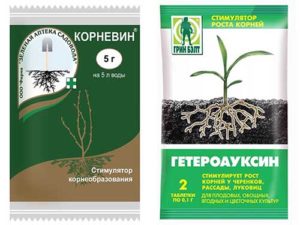
By the way! Also, to relieve stress of pepper seedlings after a pick, you can use Epin, Zircon, Energen and succinic acid.
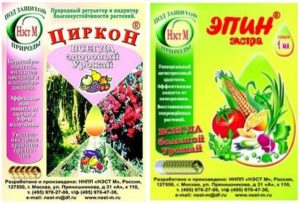
7-10 days after the pick - the main feeding
When the seedlings are fully rooted after the pick, which will indicate the appearance of new real leaves in her (i.e. there will already be 3-4 of them), it will be possible to perform the next, already full-fledged feeding of pepper seedlings.
If speak about approximate dates then, as a rule, feeding the peppers after picks perform after 7-10 days (this is how much time on average it takes for the seedlings to take root and release a new real leaf).
In this phase of development, for a good start of growth, pepper seedlings need intensive phosphorus nutrition for active formation of the root system. Accordingly, you can feed the seedlings superphosphate extract or solution potassium monophosphate (50% phosphorus and 33% potassium). Moreover, it is desirable to make several (a couple) of such phosphorus-potassium dressings with an interval of 7-10 days.
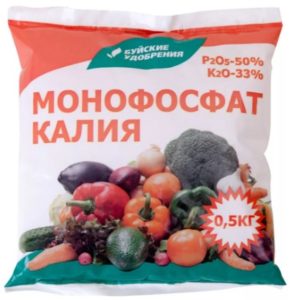
Video: the first feeding of pepper seedlings after a pick
Advice! Top dressing of seedlings will also benefit the root system. yeast infusion (10 grams of dry yeast per 10 liters of water at room temperature, as well as 4-5 tablespoons of sugar; wait 4-5 hours for the fermentation process to begin).
However, some gardeners believe that seedlings during this period, on the contrary, need more. nitrogen for the formation of leaf mass (aerial part of the plant)... Accordingly, for feeding, you can use urea or ammonium nitrate (both mineral) or prepare a green fertilizer (for example, an infusion of nettle), as well as an infusion of chicken manure and mullein (all organic). You can also feed pepper seedlings ammonia (only according to the instructions).
Be that as it may, it is possible and even necessary to feed pepper seedlings with nitrogen fertilizer once.
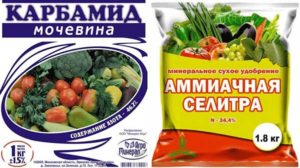
However! Nitrogen fertilizers should be handled as carefully as possible, in no case should you overdo it (1 feeding will be enough), otherwise you will overfeed the plants and they will begin to fatten (including the delay in fruiting and ripening of the future harvest).
Do you have any doubts, then the most correct decision would be to feed the pepper seedlings with one of the complexfertilizers, which includes all the necessary nutrients at once (at least macro, and better macro + micro).
Complex mineral fertilizers for seedlings:
- Nitroammofosk (nitrogen, phosphorus, potassium - all 16% each);
- Fertika Lux (nitrogen - 16%, phosphorus - 20.6%, potassium - 27.1%, as well as trace elements - iron, boron, copper, manganese, molybdenum, zinc);
- Agricola for tomatoes, peppers and eggplants (nitrogen - 13%, phosphorus - 20%, potassium - 20%, trace elements - boron, copper, manganese, zinc, magnesium);
- Granular chicken manure (nitrogen - 4%, phosphorus - 3%, potassium - 1-2%, as well as trace elements - magnesium, calcium, iron, etc.).
As a result, after a dive, you can 2-3 similar dressingsfertilizing through every 7-10 days.
For example, 1 - nitrogen and necessarily 1-2 phosphorus-potassium or just 2-3 complex.
Before planting seedlings in the ground
The last feeding is carried out 5-7 days before planting pepper seedlings in open ground or greenhouse... The optimal solution would be to feed the pepper seedlings with one of the complex fertilizers, which contains all the nutrients in approximately equal amounts, i.e. it can be Nitroammofosk, Fertika Lux or similar (more in the previous paragraph).
Rules and methods for feeding pepper seedlings
There are 2 ways of feeding (fertilizing) all plants:
- root feeding (watering seedlings at the root);
Root feeding is the main form of feeding seedlings with macroelements (nitrogen, phosphorus, potassium).

- foliar dressing (spraying on leaves).
For foliar dressing, as a rule, micronutrient fertilizers are used, as well as urea (nitrogen fertilizer). They are complementary to the main ones - root, but they are more often used in emergency cases when the seedlings need urgent help.
Basic rules and tips for feeding pepper seedlings:
- Foliar dressing can be done in the morning or evening, or in the afternoon in cloudy weather. During the day, in sunny weather, it is impossible to spray on the leaves, because leaves can get sunburn easily.
- Root dressing, as a rule, is carried out after watering with plain water or together with watering.
Advice! Experienced gardeners are advised to carry out top dressing at each watering, but in a lower concentration (3-4 times).
- When root dressing, try not to get on the leaves of the plant, watering around the plant.
Important! If the concentrated solution still gets on the leaves, then it is advisable to sprinkle the leaf plates from a spray bottle with clean water.
- Which fertilizers are better to use - mineral or organic, should be decided by each gardener independently.
However! It is worth considering that most organic manure-based fertilizers have a pungent and unpleasant odor (except wood ash).
How to feed pepper seedlings if they stretch out or outgrow
When the daylight hours are still short (in late February-early March) and you do not have the opportunity to use additional lighting, while the room is still very hot, the seedlings will inevitably stretch out.
Naturally, optimal solution will be the creation optimal conditions for keeping seedlings, but you can try using special plant growth regulators (retardants).
The most popular of them is considered “Athlete"(Active ingredient - Chlormequat chloride).
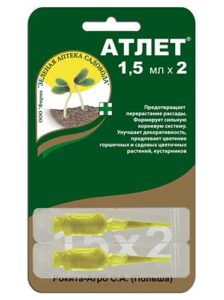
The mechanism of action of this agent is as follows: the active substance of the drug slows down the growth of the aerial part of the plant, causes shortening and thickening of the stems, and increases the width of the leaves. In seedlings, nutrients are redistributed, most of which enter the roots, causing their increased growth. And the tool also accelerates the formation of the first inflorescences and the number of ovaries in them.
Thus, thanks to spraying (foliar top dressing) with such a means, you can form a strong, but compact (not overgrown) seedlings of peppers.
Note! The instructions indicate that the first spraying must be carried out in the phase of 3-4 leaves, i.e. after picks (after 7-10 days), when the pepper seedlings take root (i.e. new leaves begin to form).
Feed your pepper seedlings wisely to grow robust seedlings that will surely reward you with a bountiful harvest!
Video: what and when to feed pepper seedlings
By the way! About, how and what to feed peppers in a greenhouse or open field during flowering and during fruiting read in this detailed material.

